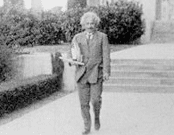|
This class is taught by your instructor
Firend Al Rasheed

"I never teach my pupils:
I only attempt to provide the
conditions in which they can learn"
Announcements
You can view your grades up to date by clicking on the Grades link.
Managing Information Systems & Technology
Course objectives:
1.
Evaluate models for determining the business value of
information systems.
2. Understand the need for information technology and information systems.
3.
Analyze the principal causes of information system implementation.
4.
Analyze the change management requirements for building
successful systems.
5.
Select appropriate strategies to manage the system implementation process.
The
foundation concepts of IS/IT body of knowledge that a business manager or professional needs to know includes;
- Technical, business, and managerial concepts like system components and functions,
or competitive strategies;
- Information technologies: concepts, developments, or management issues regarding
hardware, software, data management, networks, and other technologies;
- Business applications: major uses of IT for business processes, operations, decision
making, and strategic/competitive advantage;
- Development processes: how end users and IS specialists develop and implement
business/IT solutions to problems and opportunities arising in business; and
- Management challenges: how to effectively and ethically manage the IS function
and IT resources to achieve top performance and business value in support of the business strategies of the enterprise.
Information
systems perform three vital roles in business firms. Business applications of IS support an organization’s business
processes and operations, business decision making, and strategic competitive advantage. Major application categories of information
systems include operations support systems, such as transaction processing systems, process control systems, and enterprise
collaboration systems, and management support systems, such as management information systems, decision support systems, and
executive information systems. Other major categories are expert systems, knowledge management systems, strategic information
systems, and functional business systems. However, in the real world most application categories are combined into cross-functional
information systems that provide information and support for decision making and also perform operational information processing
activities.
Strategic Uses of Information Technology. Information technologies can support many competitive strategies. They can help a business cut
costs, differentiate and innovate in its products and services, promote growth, develop alliances, lock in customers and suppliers,
create switching costs, raise barriers to entry, and leverage its investment in IT resources. Thus, information technology
can help a business gain a competitive advantage in its relationships with customers, suppliers, competitors, new entrants,
and producers of substitute products, supporting innovative changes in the design of workflows, job requirements, and organizational
structures in a company.
|

